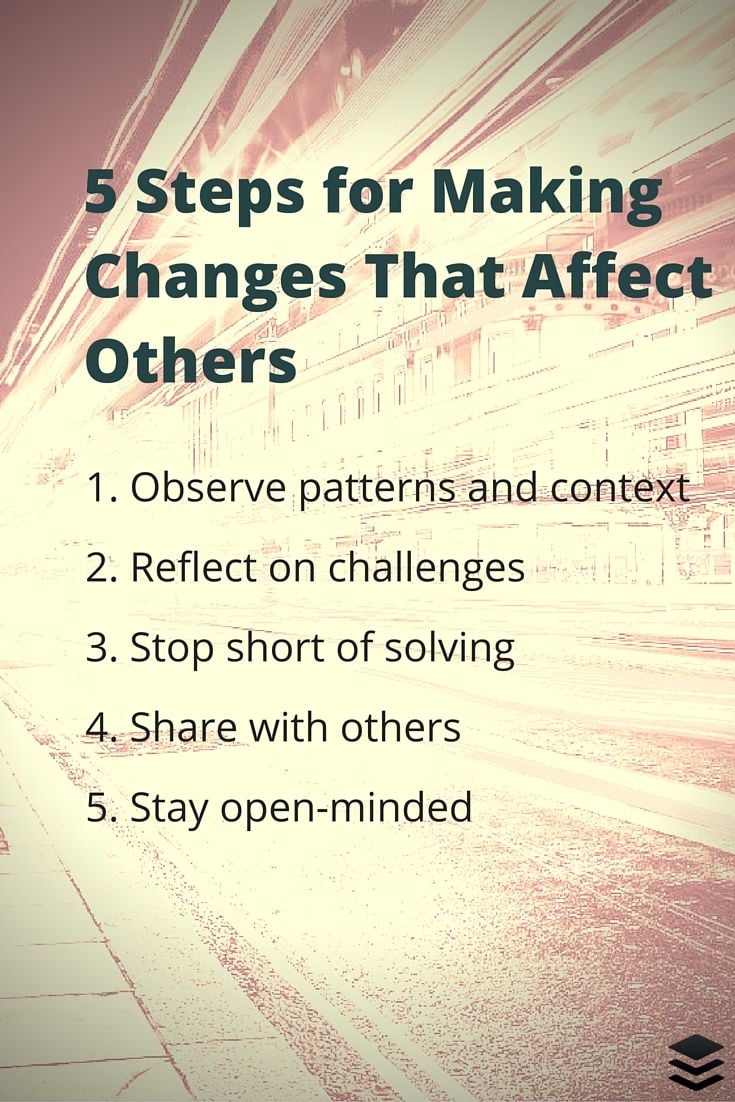“Perhaps the CEO’s most important operational responsibility is designing and implementing the communication architecture for her company.”
— Ben Horowitz
Buffer has recently grown to more than 50 people during our fastest 2 months of growth ever. I’ve found that a lot changes when you grow to this size, and any time the team grows quickly. There are a bunch of challenges and it’s also invigorating. It might be the most exciting and toughest phase of building the company so far.
Since I’m learning insights from all the different teams and areas, I see patterns across multiple areas. This leads me to ideas for making changes that could make the whole company more effective.
That’s where the danger comes in. Here’s how I’m striving to lead effectively during this time of change.
Creating a communication architecture
Something we’ve naturally needed to do as we go through this growth is to think about the communication architecture of the company.
What this has meant in our case is thinking about my role as co-founder and CEO and the role of people who have experience. It’s no longer efficient for the whole company to know about and think about every change we’re making. We’ve formed smaller teams so that they can autonomously work on a specific part of the company, without needing to know everything about all other parts of the business.
Part of creating the communication architecture is to be aware of and embrace people in the team becoming leaders, and to then have regular conversations with these people to share my thoughts.
Our product and engineering team is 20 people. There’s no way I can speak with all 20 people regularly enough to share all the insights and advice I have. Therefore, I need to speak primarily with a few people in order to get the context in a more effective way.
The result of this is that I naturally end up with a unique picture of the whole company, since I’m learning insights from all the different teams and areas.
I’m in one of the best positions to notice and implement changes to how we work, but far removed enough that I might be missing some context about how my ideas could have negative implications.
How I’m striving to approach this challenge:
- Communication architecture creates context: I try to have the communication architecture in place to put me in the best position to understand a lot of the context and to draw patterns between challenges in different areas.
- Reflection: I aim to notice challenges arising in areas, and spend time reflecting on them in a way that others might not have the viewpoint or time to do so.
- Stop short of solving: Once I start to find myself moving towards a solution for any challenge, I stop myself.
- Share challenge and context with others: I then speak with those who will be affected by any potential changes to solve the challenge I’ve found. When I do this, I try to share all the context, without a solution.
- Stay open-minded: Sometimes I may have a hint of a solution in my mind, however I try to be fully open to a different solution being the optimal one, which I can only learn based on speaking with people.
The goal of this method is that often I’m not even the one who comes up with solutions, and the changes we make are more fully embraced as a result.

Change with no context vs. context with no change
It’s really hard to do this, and I often fail. It also takes longer.
But my belief is that this approach is the best long-term choice. The difference is like night and day between sharing change with no context, and sharing context with no change.
We’ve always taken the path with Buffer that leads to us all feeling happiest with our work. We also try to take the approach that leads to the most honesty and openness between all team members.
As we grow, if we start to enforce changes without sharing the ‘why,’ we are going to eventually incur a debt in our culture and see some adverse side effects from that choice.
If instead we share the challenges we’ve uncovered, get advice to have the full context, then find the changes that we all agree on, we’re going to have the best chance to create a culture of trust, honesty and joy.
Try Buffer for free
190,000+ creators, small businesses, and marketers use Buffer to grow their audiences every month.



